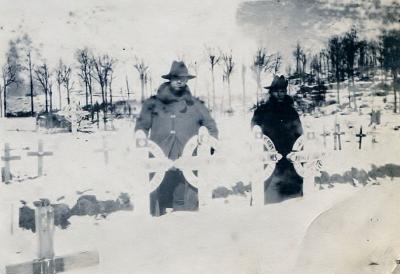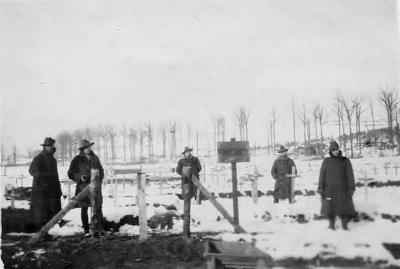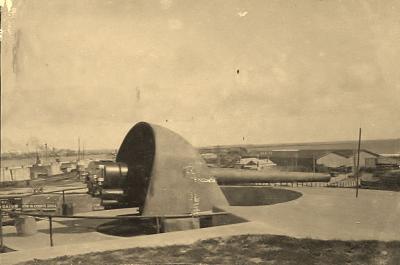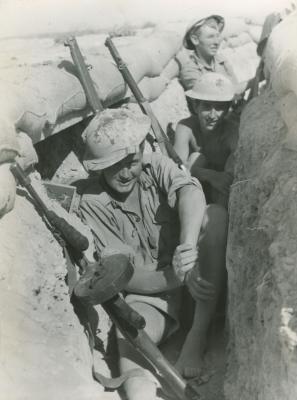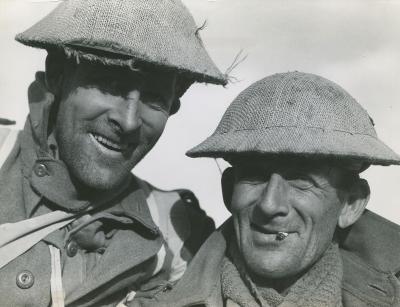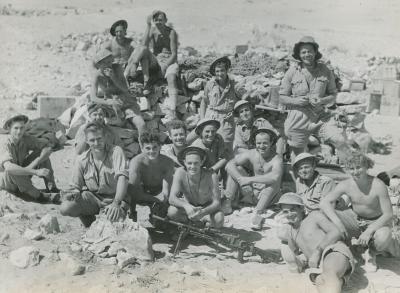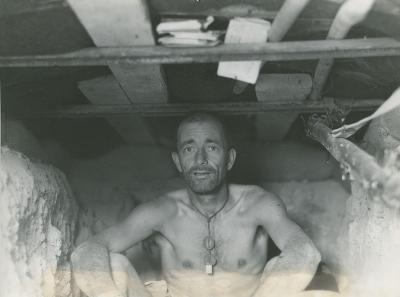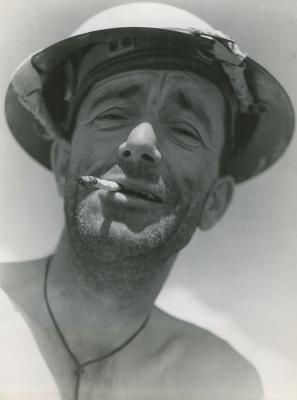World War 1 , Europe, Heavy Artillery Group, 1918
1918Soldiers pose with 9.2 inch Howitzer in the snow
The 9.2-inch Breech-Loading (BL) Howitzer was the largest artillery piece used by Australians in the war, and remains the largest used in land battle in the history of the Royal Regiment of Australian Artillery. These guns, the composition of their crews, and many of the areas of their operations, were different from the rest of the Australian Imperial Force (AIF).
Only one Australian battery – the 55th Heavy Artillery Battery – was equipped with the 9.2-inch (233-millimetre) howitzers. At first, the battery had just four guns, and this was later expanded to six. The battery, and the 54th Heavy Artillery Battery, which had 8-inch (203-millimetre) howitzers, on wheels, were placed together as the Australian Heavy Artillery Group (HAG). These two siege batteries, and their headquarters, moved from Britain to France in March 1916 and became the first Australian units to go into battle on the Western Front.
Unlike other formations of the AIF, which were created from civilian volunteers, the heavy batteries had been formed mostly from permanent artillerymen of the Royal Australian Garrison Artillery, with some reinforcements from the militia; the same regulars and citizens’ force soldiers who had been manning the forts guarding Australia’s ports and coastline. Early in the war, after it was decided that there was little direct threat to the coastal cities, the brigade was drawn together in Melbourne from the different states’ drafts, and sailed for overseas service in July 1915.
Details
Details
The Ordnance BL 9.2-inch howitzer was a heavy siege howitzer that formed the principal counter-battery equipment of British forces in France in World War I. The gun was transported in three loads - body and cradle, bed, barrel - towed by either heavy horses or a Holt tractor. The equipment comprised a segment shaped ground platform assembled from steel section and bolted to a holdfast sunk flush with the ground. An earth box fitted above ground to the front of the holdfast, with 9,100 kg(Mk 1) or 11 11,200 kg (Mk 2) of earth prevented it "bucking". In World War I, the gun served only on the Western Front with 36 British, one Australian and two Canadian batteries. Batteries increased in size from four guns to six during 1916–17. Initially, batteries were in Heavy Artillery Groups – usually a single battery of 9.2-inch with the other four batteries being differently equipped.
Artillery Barracks, the home of the Australian Army Museum of WA was the barracks for the Garrison Artillery manning Fort Arthur head and Fort Forrest.
Australian Army Museum of Western Australia
Australian Army Museum of Western Australia
Other items from Australian Army Museum of Western Australia
- World War 1 , Europe, Heavy Artillery Group, 1918
- World War 1 , Europe, Heavy Artillery Group, 1918
- World War 1 , Europe, Heavy Artillery Group, 1918
- World War 1 , Europe, Heavy Artillery Group, 1918
- World War 1 , Europe, Heavy Artillery Group, 1918
- World War 1 , Australia Western Australia Fort Forrest, Heavy Artillery Group, 1916
- World War 2, North Africa, Libya, Tobruk, 1941
- World War 2, North Africa, Libya, Tobruk, 1941
- World War 2, North Africa, Libya, Tobruk, 1941
- World War 2, North Africa, Libya, Tobruk, 1941
- World War 2, North Africa, Libya, Tobruk, 1941
- World War 2, Middle East, 1941



